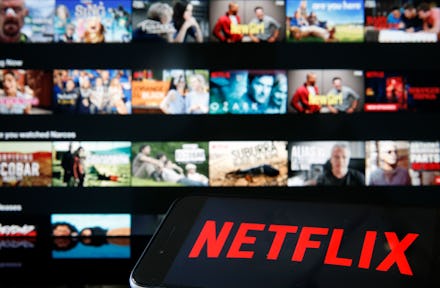What the hell are you people watching? An exploration of Netflix's weird Top 10 list

When Netflix introduced its “Top 10” feature in February, it was a small gesture toward transparency. The streaming platform would finally let its users know which shows and movies were the most viewed on a given day, if not necessarily how many people were watching them. It offered a window into the viewing habits of Netflix’s 60 million users in the U.S. and, as it turns out, we are a baffling dataset.
Although the major studios have collectively decided that the moviegoing public want familiar properties and franchises recycled ad nauseam, the results of Netflix's Top 10 reflect something far stranger. Lately they've been nudging me to watch The Talented Mr. Ripley and Groundhog Day, besides every original series — but somehow the Top 10 doesn't always contain the most popular or ubiquitous offerings on the service. It paints an audience that's a bit more difficult to predict.
For instance, how was a 2016 Mel Gibson crime thriller that grossed just under $7 million the most popular movie on Netflix last week? Or better yet, how did a little-seen, straight to VOD indie western starring Bruce Dern and Mira Sorvino clock in at number 3? Those two films, Gibson’s critically acclaimed Blood Father and Badland, are just a taste of the strange ebbs of the Netflix top 10.
As I’m writing this, top 10 movies are closer to what you might expect. Coffee and Kareem, a terrible-looking Netflix original starring Ed Helms that’s frequently plastered over the homepage, occupies the top spot, along with a number of other recent April additions, like Angel Has Fallen, Salt, The Hangover, and The Perks of Being a Wallflower. But as the month wears on and there are fewer new additions by the week, the selections grow more unpredictable. Earlier in quarantine, doomer fare like Outbreak and 2012 was understandably gaining traction. Those are topical selections that make sense in the broader context of the pandemic. It’s harder to explain Blood Father, Badland, or Miracle in Cell No. 7, the Turkish remake of a popular South Korean film that inexplicably rocketed to number 5 that same week.
These strange movie-watching habits on Netflix differ from television, where Netflix originals and old favorites tend to do the best. The film top 10s still reflect at least some reliance on the Netflix originals of the moment — Spenser Confidential or Coffee and Kareem are plausibly very popular — but also familiar faces in highly unfamiliar movies that’d often be banished in the straight-to-DVD bin.
Without broader polling of viewers, it’s difficult to pin down if these register as new releases or just new discoveries to subscribers who are watching en masse. With Blood Father and Arnold Schwarzenegger’s Aftermath, a 2017 thriller that grossed less than $1 million, it could come down to finding a face you recognize and just rolling with it. The Google search trends for Blood Father and Badland at least seem to confirm that these aren’t simply juiced numbers and people are looking into these films off the platform.
Although Mel Gibson doesn’t deserve yet another comeback, there’s at least something a bit charming about the lawlessness with which these movies can rise in the ranks. Much like how films could sometimes extend their legs on cable — god, would I have even seen A Night at the Roxbury without it being on TBS every Saturday morning — the top 10 could be unlocking a strange new way for little-seen movies to get a second life. Given the way Netflix algorithmically tailors production and creative choices, I fear the implications of how they could try to duplicate the top 10’s wild west charms. (Coming soon: Blood Uncle, a Netflix original starring Mel Gibson.) But for now, it offers a mystifying glimpse into America’s streaming habits.